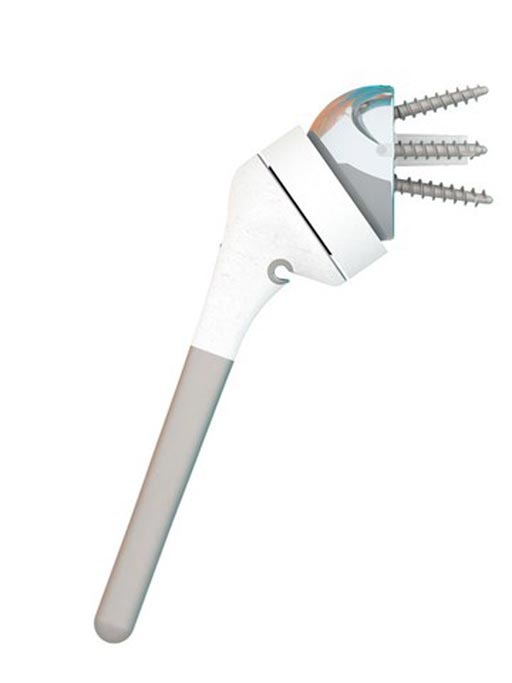Reverse Shoulder System Addresses Cuff Tear Arthropathy
By HospiMedica International staff writers
Posted on 10 Mar 2017
A novel implantable joint treats patients with both a massive rotator cuff tear and a severe form of shoulder arthritis.Posted on 10 Mar 2017
The FX Solutions Humelock Reversed Shoulder System is designed for the treatment of cephalotuberosity fractures, and is ideally suited to the treatment of complex shoulder surgical repairs involving three or four part fractures of the proximal humerus. The modular implant system consists of both humeral and glenoid parts, with an innovative anchoring plate that makes it possible to retain the patient’s native humeral head, even in cases of severe osteopenia.

Image: The Humelock reversed shoulder system (Photo courtesy of FX Solutions).
When the use of a reverse prosthesis is not possible, usually as an outcome of the patient’s age (over 70 years of age), The Humelock Reversed Shoulder System can still be used to achieve an optimum anatomical reconstruction of the tuberosities by using a complementary offset modular system (OMS) that promotes stability and consolidation of the tuberosities, which are essential to shoulder function.
The humeral part includes a cup mounted on a solid stem with an epiphysis cementable or lockable in 18 different combinations, with a titanium cage for bony stabilization. The solid stem is implanted after metaphyseal and epiphyseal rasping to compact cancellous bone, resulting in a better press-fit between the stem and humerus; if stability is not completed, the stem can be locked or cemented. The cup is made of a high-density polymer -molded onto a titanium shell to optimize impaction on the stem with a morse taper.
The epiphyseal part is smaller, a design that allows a better reinsertion of rotator muscles to optimize functional outcomes. It includes a diaphyseal stem, which can be interlocked with two screws; the same surface can also be cemented. As in the humeral part, the CD angle is 145° to reduce the risk of scapular notching by lateralizing the humerus. Stability is maintained by tilting and lowering the position of the glenosphere, which is available in two versions (centric and eccentric), and tilted 10° to avoid scapular notching.
Rotator cuff tear arthropathy encompasses a broad spectrum of pathology, but it involves at least three critical features: rotator cuff insufficiency, degenerative changes of the glenohumeral joint, and superior migration of the humeral head.














